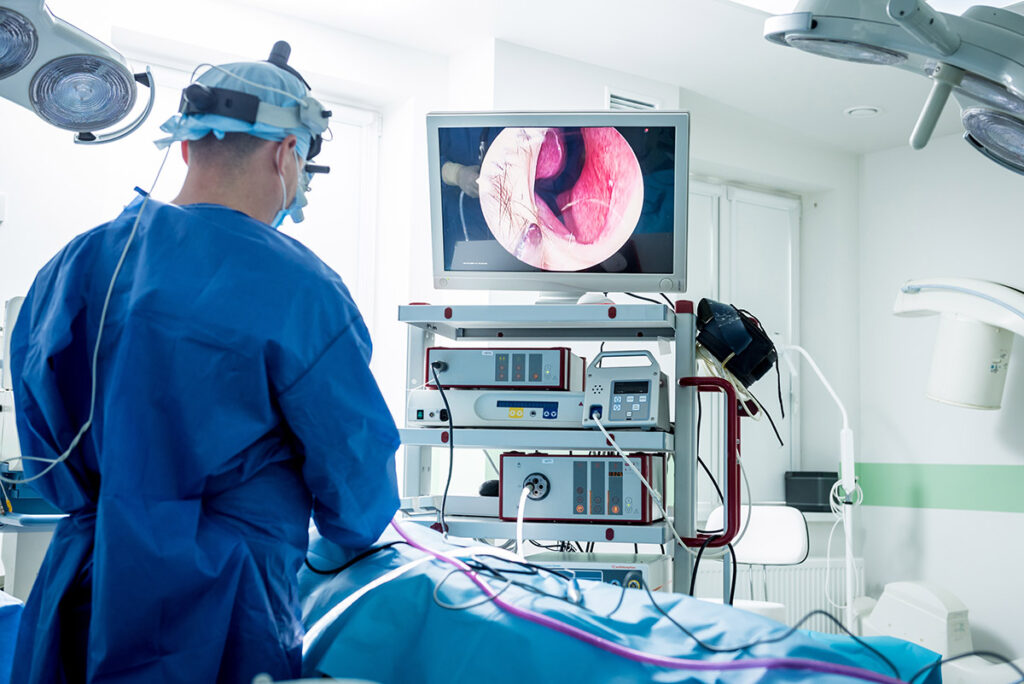A Quick Anatomy Review of the Frontal Sinus
The modified Lothrop procedure is used to treat the affected frontal sinus surgically. The frontal sinus is an asymmetrical pair of moist air pockets above the eyebrows. It is separated by a bony partition called the inter-sinus septum. Each frontal sinus drains out through its opening, the frontonasal duct, which leads into the nasal cavity.
All sinuses drain into the nasal cavity, which has soft tissue and bony structures that create pathways for airflow. For example, the nasal septum separates the nasal cavity vertically, making breathing on each nostril unilateral.
When the frontal sinus is affected, the doctor may remove parts of these structures to widen the frontonasal ducts and improve drainage. One such procedure is the modified Lothrop.
Understanding the Modified Lothrop Procedure
The initial Lothrop procedure is an open surgery in which the inter-sinus septum is removed. The surgeon also cuts out parts of the nasal septum and the bony partition between the nasofrontal ducts.
The modified Lothrop Procedure is completely internasal and shares the same goals. It’s a more minimally invasive procedure that creates an enlarged frontonasal cavity by removing the frontal sinus floor, inter-sinus septum, upper nasal septum, and the frontal beak of the inner skull.
This procedure uses an endoscope, a thin wire with a tiny light and camera on one end, to guide the doctor in resecting bones and tissues. The endoscope is inserted inside the nose with tiny surgical tools such as a soft-tissue shaver and bone-cutting drill.
Advantages of the Modified Lothrop Procedure
The modified Lothrop procedure shares the benefits of all endoscopic sinus surgical techniques.
Commonly, an Outpatient Procedure
The modified Lothrop procedure is commonly performed as an outpatient procedure. Depending on the state of the frontal sinus, the operation can take 1-3 hours to complete.
After surgery, the patients are placed in a recovery room for a few hours until they are well enough to go home.
No Scarring
Because it is endoscopic, modified Lothrop does not result in any facial scarring or changes to the shape of your nose.
A Modified Lothrop procedure involves inserting an endoscope and small surgical tools through your nose. Because the endoscope’s light and camera guide the doctor, they can improve the frontal sinus opening without open surgery.
However, some scar tissue may develop inside the nose. This concern is solved with post-operative follow-up visits for necessary scar tissue removal under local anesthesia.
Excellent Frontal Sinus Visualization Post-Operation
In a 2018 retrospective review, 84% of patients who underwent the modified Lothrop procedure sustained expansion of the widened frontonasal ducts. The expansion was graded endoscopically after each post-operative visit. Those who suffer from partial or closed openings post-operation are caused by scarring effects of persistent inflammation from their conditions, such as chronic rhinitis and nasal polyps.
High Cure Rate for Chronic Frontal Sinusitis
In the same review, 78% of patients require no further revision surgery after undergoing a modified Lothrop procedure. 90% of the patients reported “significant clinical improvement” at the latest recorded follow-up.
Those who are more likely to require revision surgery are those with the presence of inflamed tissue, often from reoccurring conditions, with the majority of the patients suffering from chronic rhinitis.
Surgical Indications: Who Can Benefit from the Modified Lothrop Procedure
The modified Lothrop procedure can reduce the number of surgeries for people with severe chronic sinusitis. According to the same review, those with oral mucus cysts and tumors can also benefit from this resection procedure. By removing the affected parts and widening the frontonasal ducts, patients can experience improved quality of life.
Expertise at Puget Sound Sinus Center
The modified Lothrop procedure is a minimally invasive surgical procedure for the affected frontal sinus. This outpatient procedure only takes a few hours and leaves no external scarring. It also has a high surgical success rate in sustained expanded openings and symptom improvement. It’s important to be in capable hands when undergoing this procedure. Dr. Amy Anstead, a seasoned skull-based surgeon at Puget Sound Sinus Center, offers decades of expertise. Experience personalized, holistic care with us. Schedule your appointment today for sinus relief and a clearer head.




